Retrofit Single Ply Roof Systems: An Assessment of Wind Resistance

By GAF.
Metal buildings with metal panel roof systems are commonly used across the United States for storage and commercial office space.
A retrofit single-ply roof system is often installed on top of the metal panel roof after it has been determined that the metal roof no longer provides useful service.
Before jumping into the discussion about retrofit single-ply installations, it’s necessary to mention that there are generally four ways to replace or re-cover an existing metal panel roof system.
-
Metal roof panels can replace the existing metal panels, or they can be installed as a re-cover roof system.
-
Single-ply roof systems can be installed as a re-cover roof system.
-
Roof coatings can be applied to the existing metal roof.
-
Spray polyurethane foam can be installed over the existing metal roof.
The focus of this blog is the use of single-ply roof systems as re-covers over existing metal panel roofs.
Attachment options
The method of attachment for a retrofit single-ply roof system over an existing metal panel roof is of utmost importance for the long-term success of the overall roof system and for the wind-uplift resistance of the single-ply system.
A retrofit single-ply roof system over a metal roof can be installed in one of the following ways:
-
The membrane can be mechanically attached into the substructure (i.e., the purlins) through the insulation layer. This is generally considered to be best practice.
-
The membrane can be adhered to insulation that is mechanically attached to the metal roof panels. This could be problematic because the metal roof panels are not equivalent to a steel deck.
-
The membrane can be adhered to insulation that is adhered to the metal roof panels. This could be problematic for long-term performance.
Membrane adhered to mechanically attached insulation
While it is possible to use an adhered membrane over mechanically attached insulation into existing metal panels, this is not considered to be best practice. The primary issue is that a metal roof panel is not equivalent to a traditional steel roof deck. The yield strength of the steel can vary, the thickness of the metals can vary (e.g., 24 gauge or thinner for metal roof panels versus 22 gauge or thicker for steel decks), and the geometry differs between the two (e.g., steel decks have deep, closely spaced ribs relative to metal roof panels). For more information, check out the video in this post.
Importantly, the overall structural capacity of a steel deck attached to steel joists and trusses very likely has more inherent capacity than a typical metal building. As noted in a 2017 article written by MBMA’s Director of Research and Engineering:
“Many conventional roof systems have inherent excess capacity because their structural systems are not amenable to optimization. However, metal roof and metal building systems can be highly optimized for design load requirements to use material more efficiently. Because of this, the materials used during a re-cover installation must be lightweight (less than 3 pounds per square foot) so structural modification are not needed or are kept to a minimum to carry the new, additional roofing materials.”
Given the inherent differences, the roofing industry should not treat a metal panel roof system as an equivalent to a traditional steel deck. Therefore, adhering a single ply membrane to insulation that is mechanically attached to metal roof panels is not a good idea for long term performance.
Membrane adhered to adhered insulation
The membrane can be adhered to insulation that is adhered to the metal roof panels. This could be problematic for long-term performance. because the metal panels may deflect and create shear within the adhesive layer that is attaching the metal panel to the roof system. Over time, this might cause the adhesive to fail and therefore, the single ply roof would no longer be attached to the metal panel roof.
Mechanical attachment of retrofit single ply roof systems
Best practice—for longevity and wind resistance—is to attach a retrofit system into the existing structural purlins. Let’s investigate this further as there are different approaches to this concept, as well.
There are three general ways to mechanically attach a retrofit single-ply roof system over an existing metal panel roof system.
-
Purlin fasteners and seam plates into every purlin at various fastener spacing. See Figure 1.
-
Purlin fasteners and seam plates into every other purlin at various fastener spacing. See Figure 2.
-
Purlin fasteners and inductively heated plates into every purlin at various fastener spacing. See Figure 3.
Purlin fasteners and seam plates are installed within a single-ply membrane seam (think typical mechanically attached roof systems) and/or through the membrane in the middle of a wide sheet and weatherproofed with a stripping ply, as shown in Figure 1. Purlin fasteners and plates that are heat-induction welded are installed prior to the membrane installation and are induction welded from the topside of the membrane. This blog post will help explain the options. For any of the fastening methods, the fastener spacing within a row is based on the required wind uplift resistance for the specific project and pull-out strength of the fastener/purlin combination.
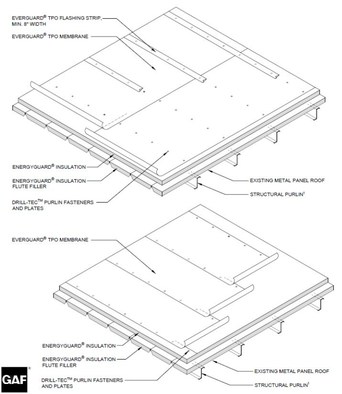
Fig. 1. Attaching an RSPRS into every purlin
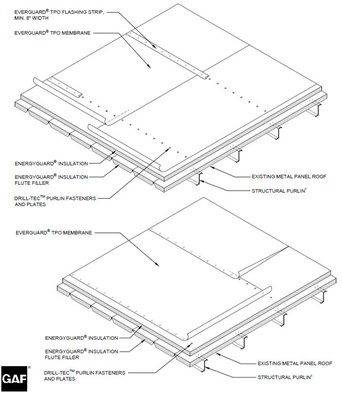
Fig. 2. Attaching an RSPRS into every other purlin
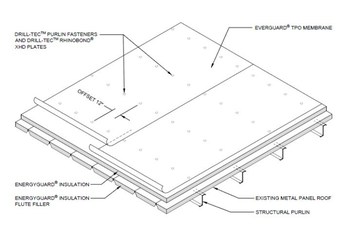
Fig. 3. Attaching an RSPRS into every purlin using induction welding
Example calculation of wind uplift resistance
Recognizing that attachment of an RSPRS into purlins is generally considered best practice, let’s take a look at example calculations for one set of conditions using the following design parameters.
-
Building height = 40 ft.
-
Basic wind speed = 120 mph
-
Exposure Category = Exposure C
-
Building Risk Category = Risk Category II
-
Enclosure Classification = Enclosed
-
Roof slope = 2:12
-
Factor of safety of 2.0 is applied to the design wind loads
The calculations are based on using the Allowable Stress Design method from the 2010 edition of ASCE 7, “Minimum Design Loads and Associated Criteria for Buildings and Other Structures.” This example, as well as all of the information in this blog post, can be found in GAF’s “EverGuard® TPO/PVC Mechanically Attached and Drill-Tec™ RhinoBond® Retrofit Roofing Systems Over Metal Roofs.”
The resulting design uplift loads for each roof zone are shown in Figure 4.
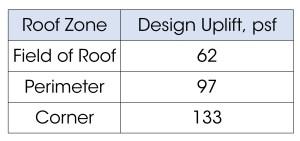
Fig. 4: The resulting design uplift loads for each roof zone
The required fastener spacing for each row of fasteners is based on a minimum pullout capacity and purlin gauge. See Figures 5 and 6.

Figure 5: Mechanical attachment best practice guidelines for purlin fasteners and seam plates

Figure 6: Mechanical attachment best practice guidelines for inductively heated fasteners and plates
The design wind loads on older metal buildings may be less that the design wind loads used today. Therefore, when re-covering an older building, purlins may need to be added in the corners and along the perimeters to provide additional locations for fasteners to be installed in order to resist an increased design wind load.
GAF’s “EverGuard® TPO/PVC Mechanically Attached and Drill-Tec™ RhinoBond® Retrofit Roofing Systems Over Metal Roofs” is a useful tool for RSPRS design.
Concerns about wind-uplift load path
The load path for wind uplift resistance for metal panel roofs on metal buildings is from the roof panels to the purlins through the concealed clips that attach the panel to the purlin. The load on the purlins is transferred to the main structural members through fasteners that attach the purlin to the main structural members.
A metal building is designed to use the capacity of every purlin for wind uplift resistance, and the original load path for a metal building is maintained when a retrofit single-ply roof system is mechanically attached to every purlin. However, when a retrofit single-ply roof system is mechanically attached to every other purlin, the load path is altered considerably. Figure 7 shows the difference between the load paths for an “every purlin” and an “every other purlin” retrofit single-ply roof system installation.
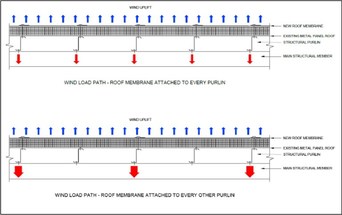
Figure 7: Illustration of wind-resistance load paths.
Altering the load path to this extent raises the question about the effect on the existing metal building’s capacity to resist wind uplift.
Critical assumptions for wind uplift
When installing fasteners into purlins, two critical assumptions are made.
-
The wind uplift loads that are transferred to the purlins are not overloading the uplift capacity of the purlin-to-frame attachment.
-
The wind uplift loads that are transferred to the purlins are not going to create excessive rotation or deformation of the purlin and therefore reduce its uplift capacity.
Regarding assumption No. 1: When installing fasteners into every purlin, the overall load path is not significantly changed, and it is rational to believe the retrofit single-ply roof system is not overloading the purlin-to-frame attachment. However, when installing fasteners into every other purlin, the overall load path is changed (only every other purlin is part of the load path for wind-uplift resistance). It may not be appropriate to believe the original design of the connection from the purlin to the main structural member has the capacity to resist this increase in wind uplift loads given the new load path.
Regarding assumption No. 2: New purlin bracing can be used to prevent excessive rotation or deformation of the purlin. However, it should be recognized that the existing metal panels remain attached to the existing purlins, and if the overall metal building/system was originally designed to resist purlin rotation, that should remain unchanged if the retrofit single ply roof system is attached to every purlin. Therefore, the existing metal panels should continue to prevent excessive purlin rotation or deformation. If the purlins resisted rotation, for example, due to the 24” on-center panel clips that are fastened to the purlins, the purlins should remain resistant to rotation or deformation unless the existing system is altered in some way that allows purlin rotation or deformation. The addition of the retrofit single-ply roof system fasteners does not provide any significant resistance to purlin rotation because the membrane and insulation do not provide racking resistance or stiffness. However, when fastener attachment occurs in every other purlin, it is unknown if the purlins will be subject to excessive rotation or deformation under wind-uplift conditions.
Note: This guidance presumes that a retrofit single-ply roof system is being installed solely as a reroofing project. If whole-building changes are made, a registered design professional should be involved in the re-roofing effort.
Summary
Given the accumulating stock of metal buildings with metal roof panels, the need to properly re-cover or refurbish structural metal panel roof systems is essential. When a retrofit single-ply roof system is used, it’s appropriate to attach into every purlin in order to maintain the original load path for wind resistance. When attaching into every-other purlin, it is prudent to examine if the purlin-to-mainframe connection might become overloaded when resisting wind loads.
For additional information about this topic, here is the GAF paper that was presented at the 2019 RCI (now IIBEC) Convention and Trade Show.
GAF will also be presenting additional information on physical testing of retrofit single-ply roof systems that was done in conjunction with Missouri University of Science and Technology at the 2020 IIBEC Convention and Trade Show.
Original article source: GAF













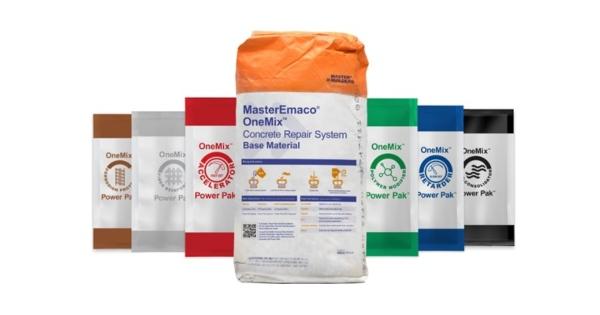

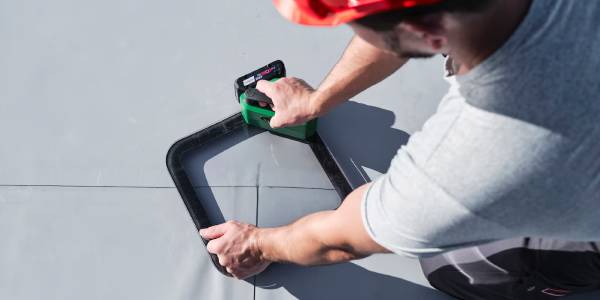






Comments
Leave a Reply
Have an account? Login to leave a comment!
Sign In